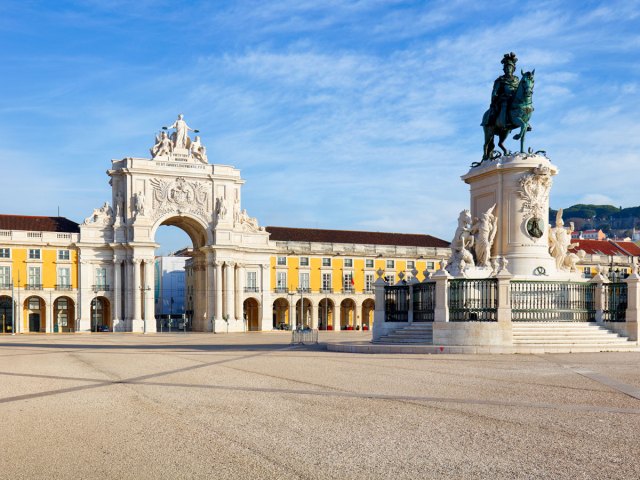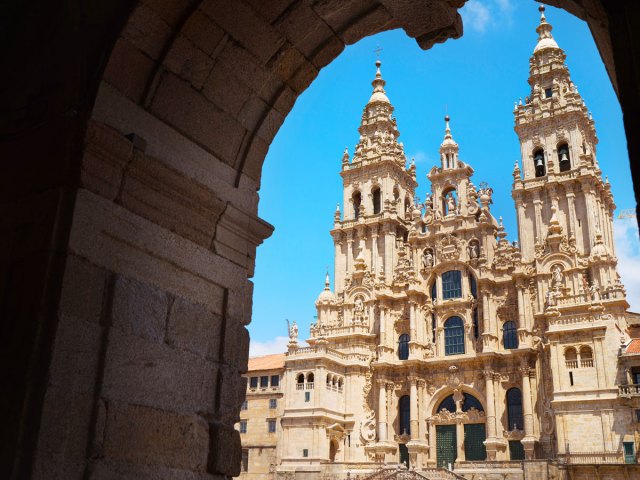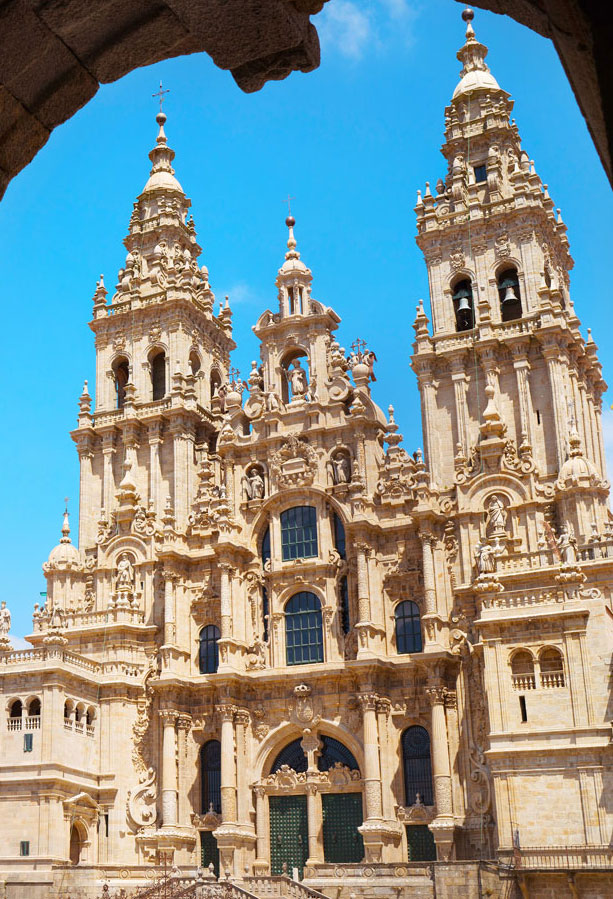For the quickest route to exploring the unique culture of a European city, head directly to the main square. Whether they call them squares, piazzas, praças, or plazas in the local language, these Old World spaces are usually anchored by a striking cathedral, palace, or civic building. Serving as the central hub of their cities, they have played host to countless celebrations, demonstrations, and coronations over the centuries. So, grab a bench or a café chair and get ready to take in the beauty of these five grand European city squares.
Marienplatz – Munich, Germany

Marienplatz, the central square of Munich, wouldn’t belong anywhere else but Germany. For starters, it features a charming (and perhaps slightly quirky) 260-foot mechanical clock, Rathaus-Glockenspiel, whose 43 chimes and 32 spinning mannequins reenact scenes from Munich’s history.
Two massive city halls, one dating back to the early 1300s and a newer one from the 19th century, surround the square, both laden with heavy dollops of architectural ornamentation and topped by pointy towers. You’ll also find monuments to military history here, including a central column erected to mark the end of Swedish occupation during the Thirty Years War.
In December, a bustling Christmas market takes over Marienplatz, lit by twinkling lights, with mulled wine and hand-carved wooden Nativity scenes for sale. Marienplatz, though badly damaged by Allied bombs in World War II, has been shored up and restored to its ancient role as the cultural heart of Munich. Stop by for a bit of German history and, if you time your visit to coincide with the chiming of the Glockenspiel, a bit of twirling levity with your lesson.
Praça do Comércio – Lisbon, Portugal

Like Venice’s Piazza San Marco, Lisbon’s vast Praça do Comércio is meant to impress visitors arriving by boat, a fitting entrance for the capital of a seafaring nation. One end of the praça, or plaza, opens up to the River Tagus, and the other three sides of the square are lined by a uniform and striking array of 18th-century buildings painted a brilliant shade of yellow. The line of buildings on the side of the square opposite the river is broken by a white marble triumphal arch that leads into the Baixa neighborhood of Lisbon.
Many of the world’s notable city squares were established over centuries and contain buildings of contrasting architecture and vintage. However, the Praça do Comércio was built in the decade immediately after the 1755 earthquake that leveled most of Lisbon, so the square’s elegant symmetry was by design — a symbol of stability and enduring beauty for the citizens, as well as a message to the world that the city was again open for business. Even if you enter the square on foot rather than by boat, the expansive square’s balance and grandeur still impress.
Trafalgar Square – London, England

Like the spindle on a great turntable, Nelson’s Column stands serenely in the center of Trafalgar Square while noisy London spins around it. Indeed, since 1290, this spot has been so central to the English that distances to and from the city have been measured from Trafalgar Square, or Charing Cross, as it was called at the time.
Back then, the site was a walled courtyard, part of Whitehall Palace, but architect John Nash envisioned a public gathering space for the site and began work on his plan in 1812. Trafalgar Square was finally completed in 1844, a year after the 169-foot-tall memorial to the war hero Lord Nelson was erected.
The lively square, still a regular gathering place for ceremonies, celebrations, and political demonstrations, is flanked by the National Gallery, St. Martin-in-the-Fields Church, and the Mall — a wide, tree-lined, red-paved boulevard that leads to Buckingham Palace. Other public works in Trafalgar Square include fountains and more statues, as well as the Fourth Plinth, an elevated site where a rotating display of artists’ sculptures are mounted. At the northeast end of the square near the National Gallery, look for the bronze plaques that were mounted in the pavement and walls which depict the Standard Imperial Measures, replacing wooden predecessors that burned in an 1834 fire in Westminster.
Praza del Obradoiro – Santiago de Compostela, Spain

The great cathedral of Santiago de Compostela, the capital of Spain’s northwest Galicia region, is thought to hold the remains of the apostle James and marks the end of the nearly-500-mile Camino de Santiago pilgrimage trail. The broad square in front of the cathedral, the Praza del Obradoiro (praza is the Galician version of the Spanish plaza), is therefore often filled with groups of hikers, standing, sitting, and reclining with their backpacks and recovering from their journey.
Another of the grand buildings that make up the sides of the square is the Hostal de Los Reyes Católicos. Now a luxury hotel, it was originally built by King Ferdinand and Queen Isabella in the 15th century to serve as a hospital and hostel for pilgrims to Santiago de Compostela.
Flanking the other sides of the square are the Colexio de San Xerome, a university that dates back to 1501, and a governmental palace that is now the town hall. The elegant buildings along the praza are serenely uniform in the color of their stonework, but each facade represents a different architectural style, which makes a survey from the center of the square a delight for visually-minded visitors.
St. Peter’s Square – Vatican City

This grand and photogenic piazza was purpose-built for crowds in 1656 at the behest of Pope Alexander VII, who wanted to return Rome to its ancient role as one of the great cities of the world. Either end of the elliptical piazza is framed by two semicircular colonnades designed by Bernini, the sculptor and architect responsible for many works at the Vatican. The center of the ellipse is marked by an Egyptian obelisk, flanked on either side by a pair of stately fountains.
Most days, tourists pass through the square on their way to visit the Sistine Chapel or St. Peter’s Basilica, but on Sundays, they gather here after noon to hear the Pope give his weekly address to the faithful from a balcony in his apartments. (Occasionally, he says mass from a balcony at the top of the basilica.) If you can’t catch a glimpse of His Holiness, maybe the sight of 140 saints, popes, and martyrs perched atop Bernini’s colonnades (in marble form) can lift your spirits heavenward.
More from our network
Daily Passport is part of Optimism, which publishes content that uplifts, informs, and inspires.























